
It’s been another down day for the markets. If you recall, on Friday night, we saw the US markets cool off, and that impact spread to Asia this morning, which also affected the Indian market. The problem is that we’ve come off significantly from the top, while the US market was very strong. Now, the US market is perhaps going through some profit-taking, and that sentiment is hitting us again on the downside.
Nevertheless, I think the scare of a new virus also became a narrative over the weekend, and although there were expectations for a significant fall, it didn’t come through as expected. We did see about a 1% fall across the board, but the anticipated bigger fall did not materialize. While we are getting hit on a daily basis, it’s important to recognize that with each drop, we may be getting closer to a bottom than to the top. From that perspective, some part of the journey is done, and some more may happen over time.
Today, we will discuss a common practice done by many retail investors, which I’ll debunk in terms of why you shouldn’t waste your time on it.
Where is the market headed?
Market Overview
As you can see, the market has been hovering near the 22,800 mark for about 5-6 sessions. It seemed like we were trying to find a bottom, but today’s gap down crushed that hope, and we are now falling into a zone where there is virtually no support until around 21,800.
Today, we saw a 1% drop in Nifty, with no recovery during the day to cover the gap. It looks like the market is looking for a new level of equilibrium. Where it will stabilize and stop is anyone’s guess.
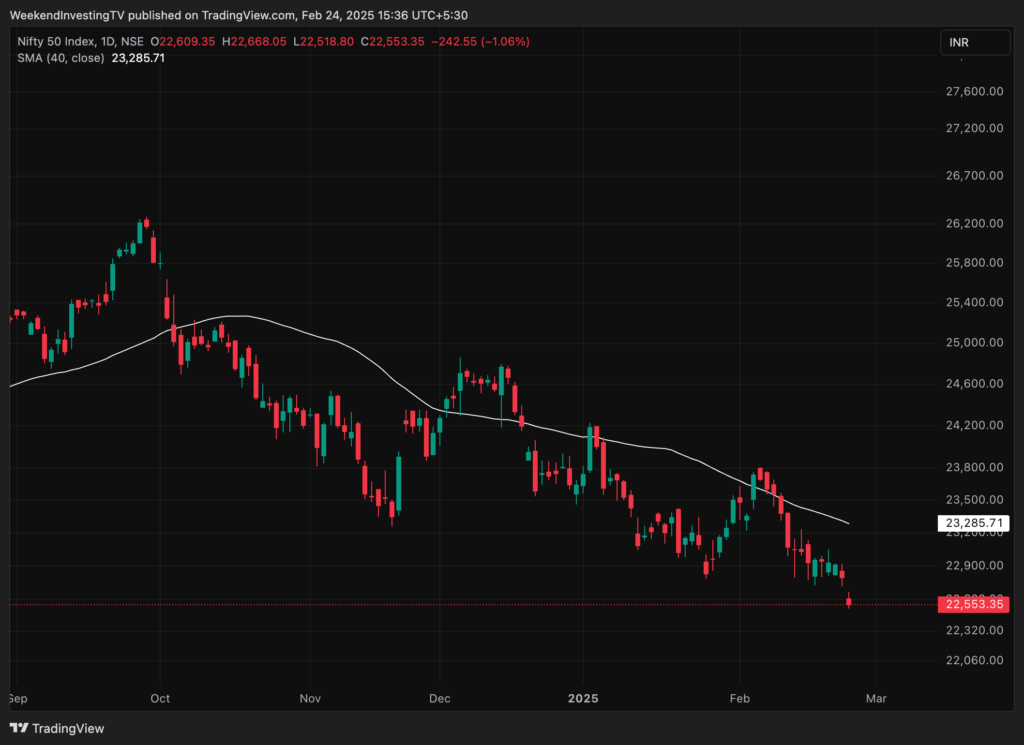
Nifty Next 50
Nifty Next 50 also dropped by 1.18%, but thankfully, it had run up in the last four to five sessions, so we aren’t at recent lows.
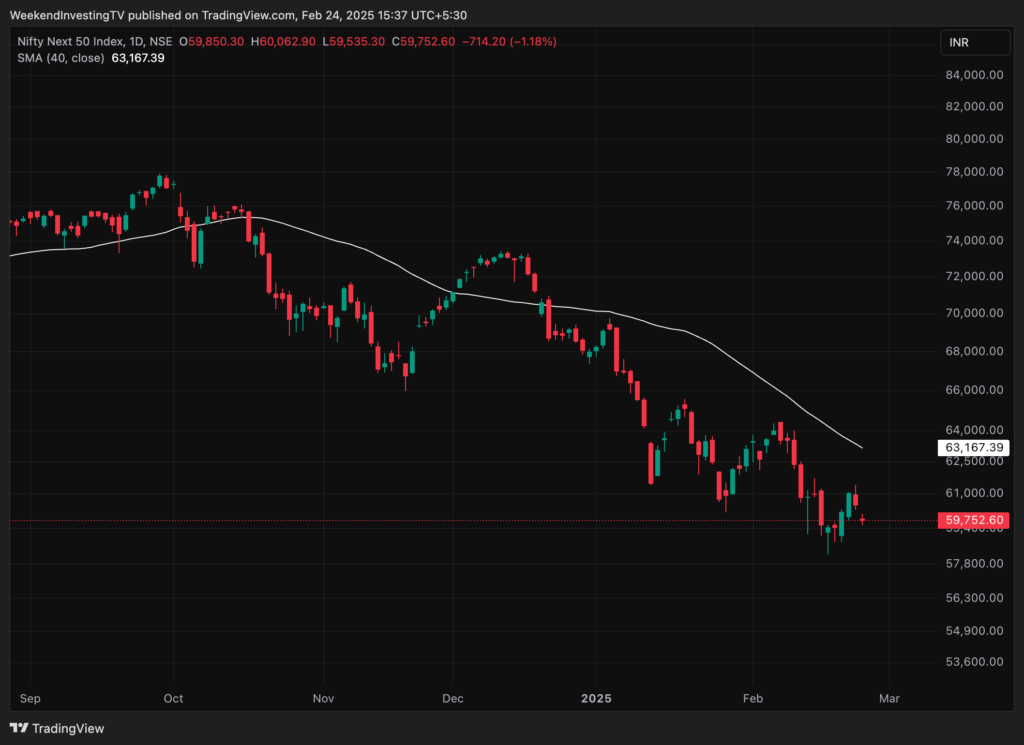
Nifty Mid and Small Cap
Similarly, mid-caps tried to make a comeback after a heavy fall this morning but ended with a net drop of 0.95%. Small caps also saw a 1.2% decline, not reaching a new low, but still looking weak from a trend perspective.
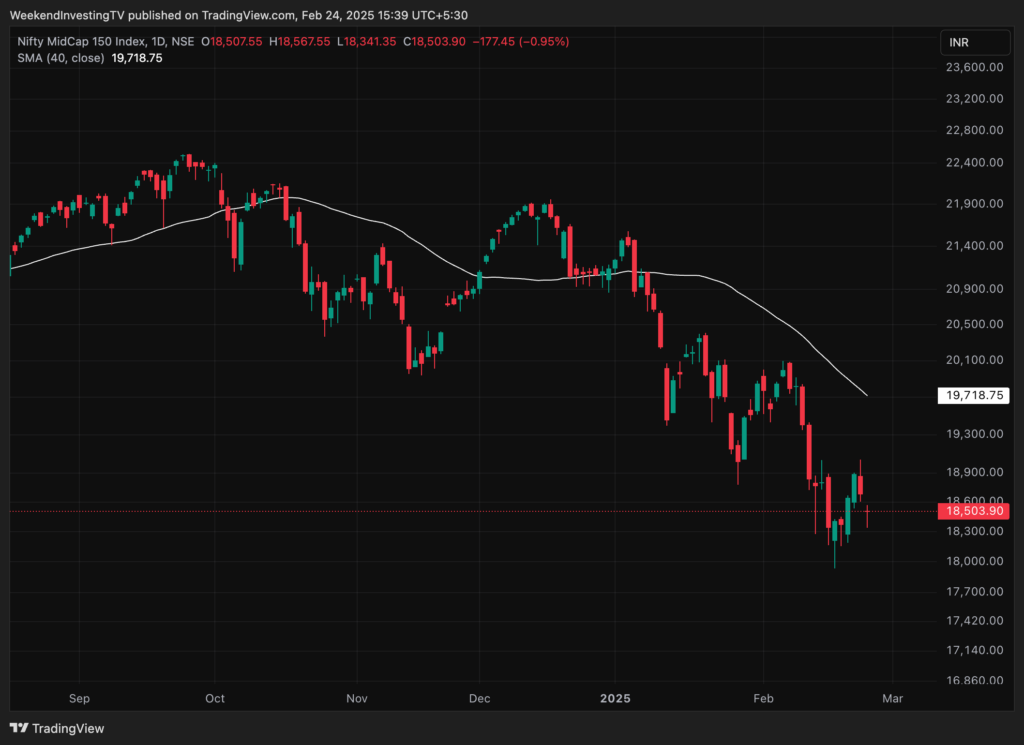
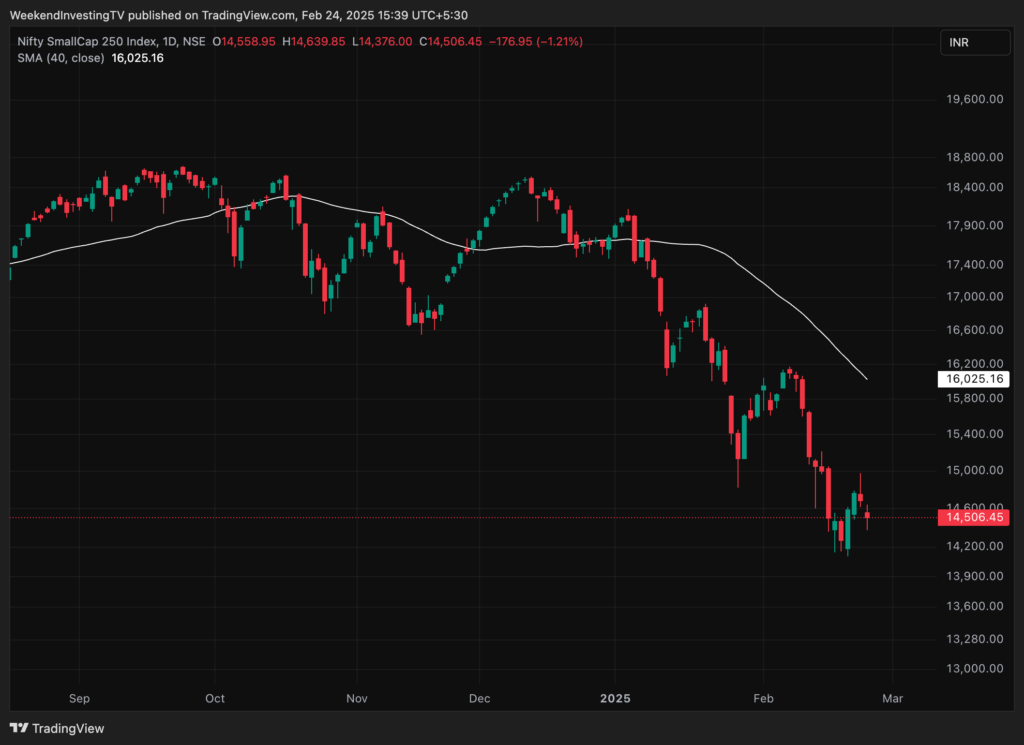
Nifty Bank Overview
The Bank Nifty recovered a bit from its morning lows and covered the gap very nicely, closing down 0.67% for the day. No major movements occurred on Bank Nifty, as it seems to be moving more sideways in a range-bound fashion.
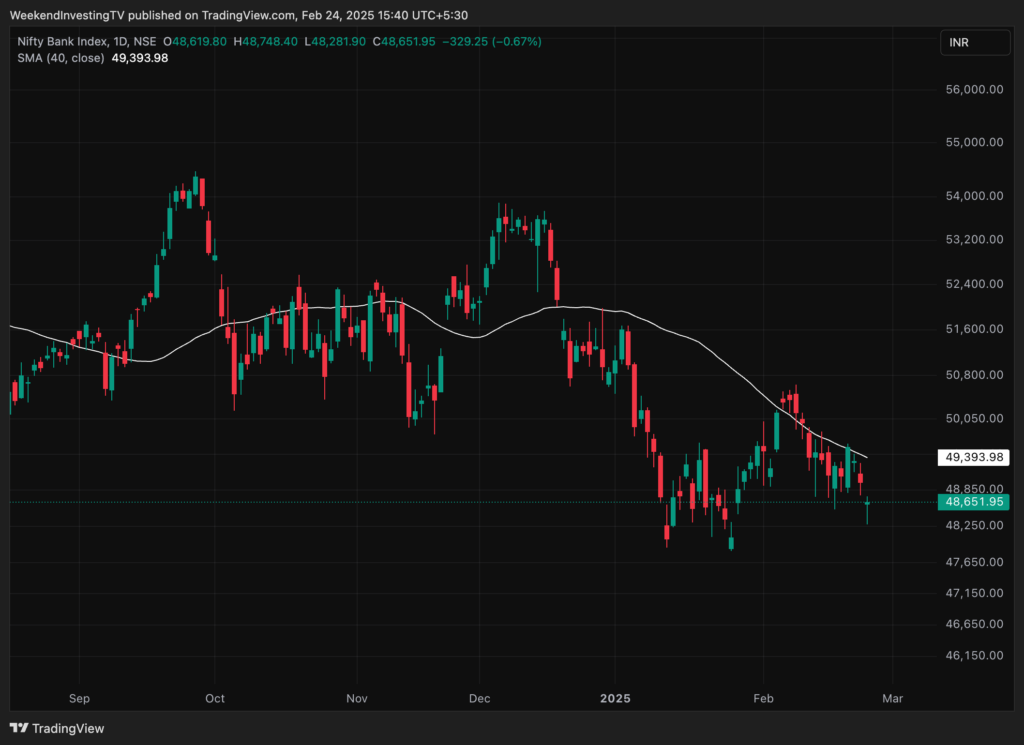
GOLD
Gold, on the other hand, is up by 0.36% in Indian Rupees, with a price of 8655 INR. The consolidation in gold suggests that a big move might be around the corner, potentially a few thousand points.
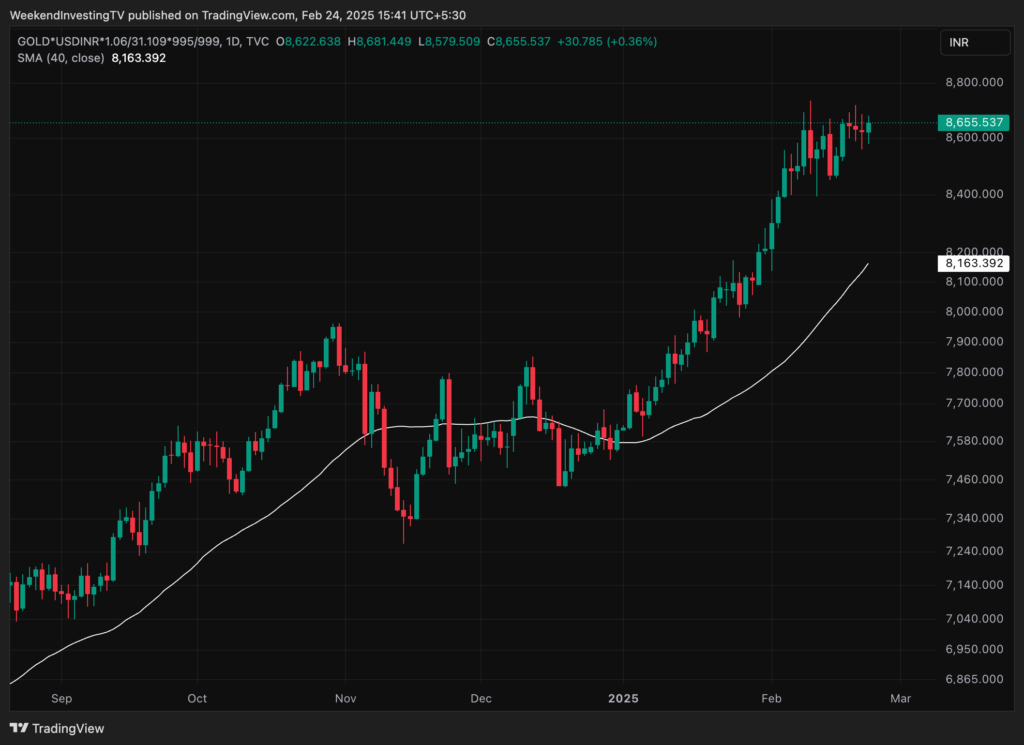
Advanced Declined Ratio Trends
The market breadth was mostly in the red, with Nifty 500 losing 3,396 stocks and gaining only 102 stocks. Nifty lost 38 stocks and gained just 11. Everything across the board was mostly on the losing side today.
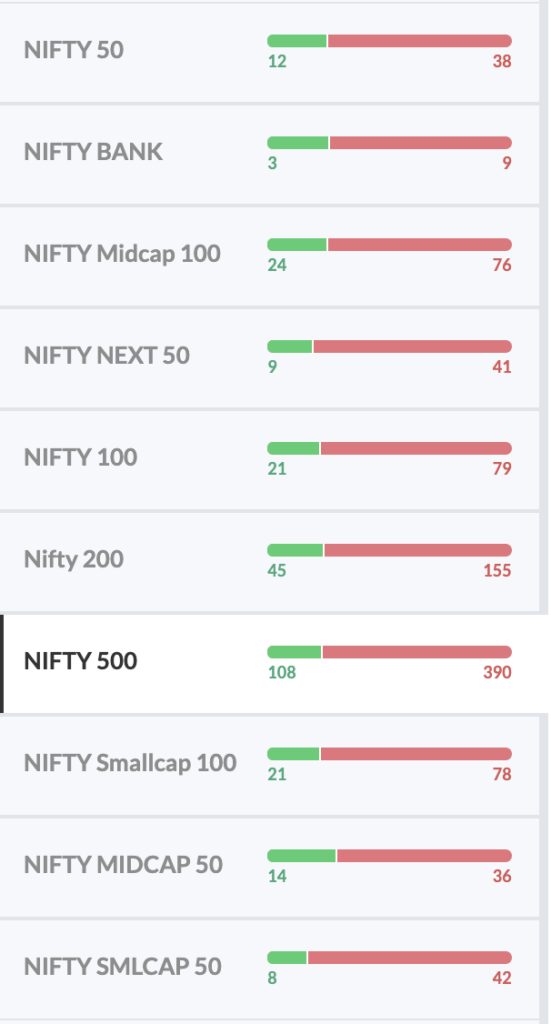
Nifty Heatmap
Looking at the heatmaps, IT stocks were hammered badly, with HCL Tech, Wipro losing more than 3%, Infosys and TCS almost 3%, and Bharti losing big as well. L&T, Reliance, HDFC, ICICI, State Bank, ONGC, Coal India, NTPC, and Power Grid were also in the red. Essentially, there was a red wave across the board.
In the Nifty Next 50 space, ITC, HUL, Mahindra, Maruti, Titan, Aisha Motors, Dr. Reddy’s, and Cipla were some of the major losers. The reds dominated in a big way here as well, with Vedanta, Zomato, LTIM, REC, Bajaj Holding, DLF, PFC, Lodha, Bhel, NHPC, and JSW Energy all losing ground. A few stocks stood out positively, such as Varun Beverages, United Spirits, and TVS Motors, which might just be a reaction to the big downtrend they had in the previous sessions. Ebb also rose by 1.8%.
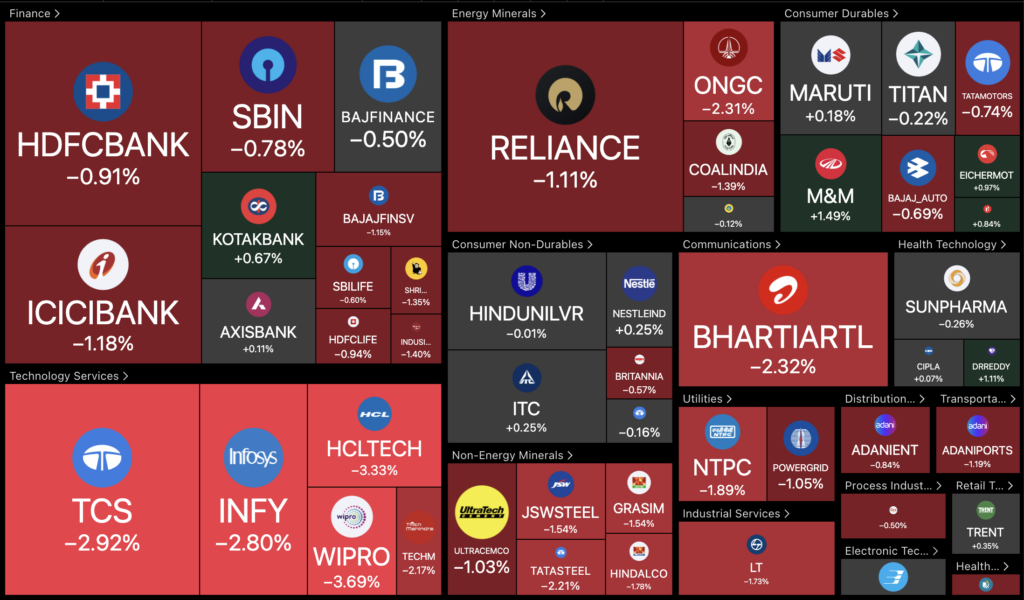
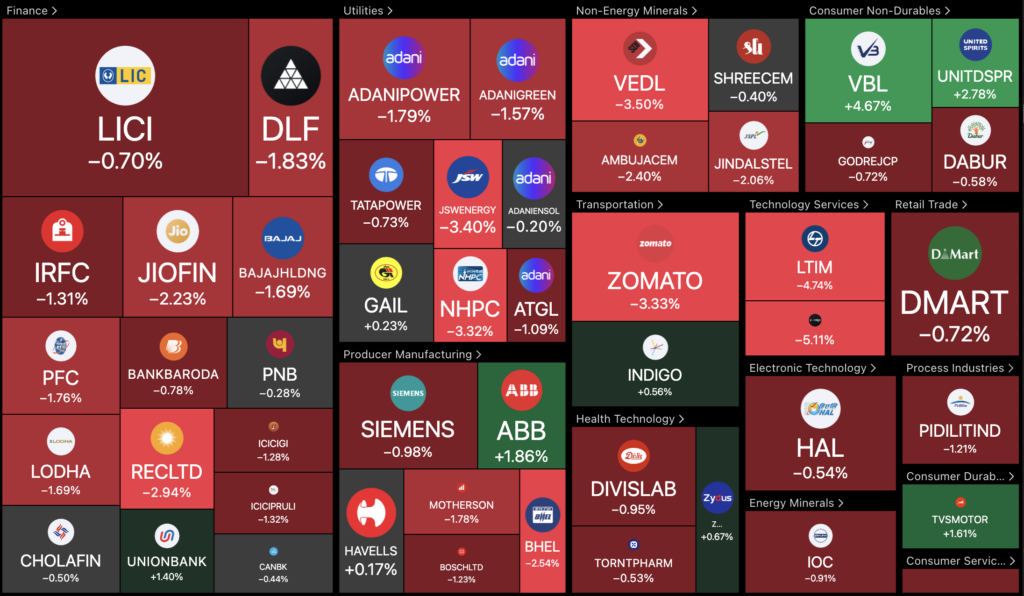
Sectoral Overview
On the sectoral map, Nifty IT lost 2.74%, and Nifty Metals dropped by 2.2%. These two sectors were hit the hardest. Commodities were also down by 1.6%, and only FMCG and auto managed to eke out some gains for the day. Looking at the week gone by, public sector enterprise stocks and Nifty Metals performed well.
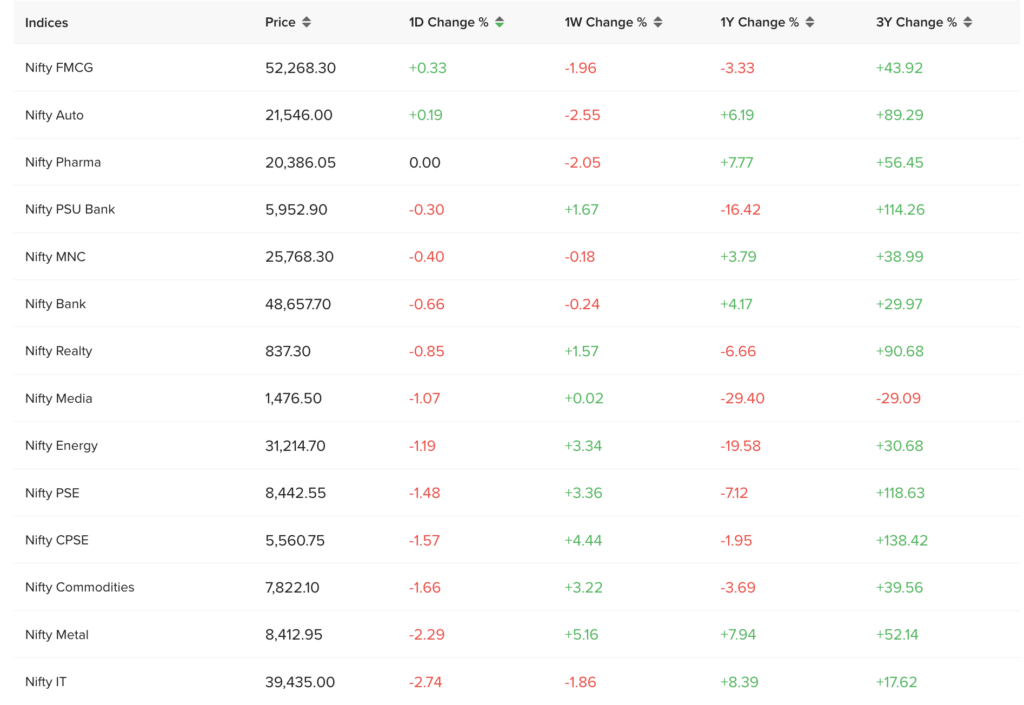
Sectors of the Day
Nifty FMCG Index
while FMCG had a really bad-looking chart. It has dropped from 67,000 levels to 52,000, losing more than 20-25%, with no sign of forming a base, although it did defy some weakness today.
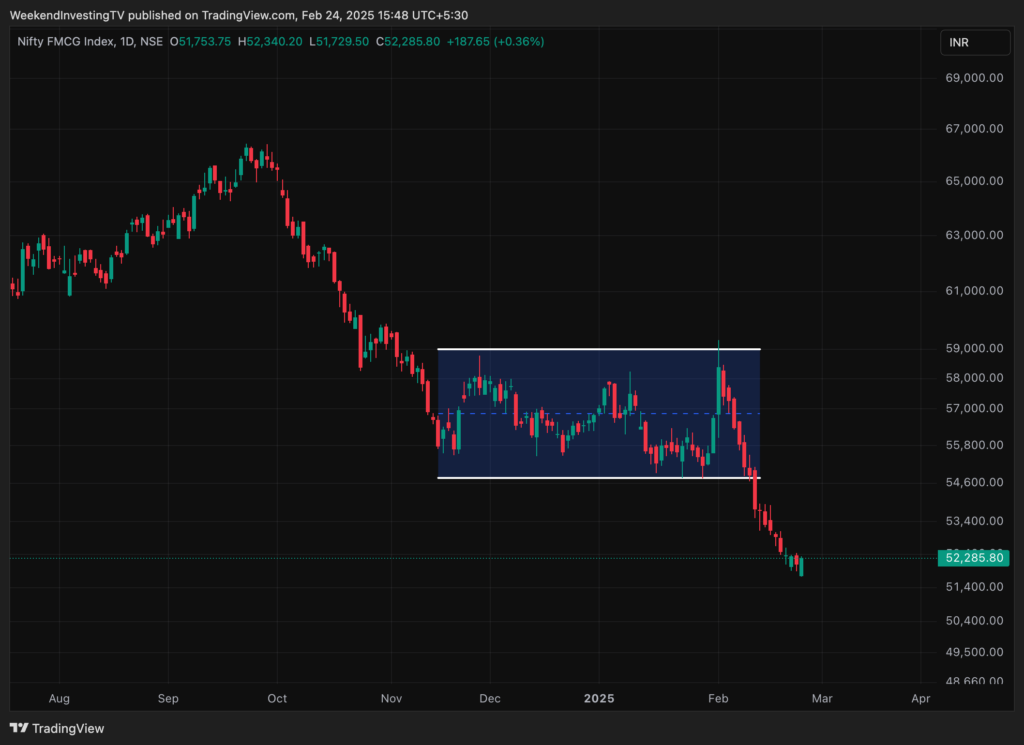
Story of the Day : Don’t waste your precious time doing this
The practice I’m referring to is deciding whether to continue your SIP now or wait for a further correction. This is a common query we get from investors—should they wait for a correction to invest more, or should they continue their SIP as planned? The usual regret comes from wondering whether they chose the right week or the right time for their SIP. For instance, if you invested in October, the market went down, and you felt bad. Then in November, you invested again, but the market fell. Then in December, you felt good after the market went up, but the cycle repeated in January and February. Essentially, when markets are falling, wherever you invest, you’ll find yourself lower later on if the downtrend continues. But you can’t predict that.
This constant attempt to perfect the timing of your entry leads to regret. You wonder whether you should have invested at the end of the month instead of the beginning, or whether you should have waited for a bigger dip. But realistically, you can’t predict the bottom of the market, and trying to do so is impractical. Let’s do some data analysis. Imagine you could perfectly predict the bottom and top of the month for your SIP. Let’s see what would happen if you did that.
We’ll study three entry points: the start of the month (a no-nonsense SIP), predicting the extraordinary bottom, and investing at the highest point. If you had invested 10,000 rupees monthly for 20 years, from 2005 to 2025, here are the results: The person who invested consistently at the start of the month without trying to time the market ended up with 86 lakhs. They made a return of 11.4% IRR. The person who was unlucky and always invested at the top of the month ended up with 82 lakhs, achieving 11.04% IRR. The person who theoretically could predict the lowest point of the month had 91 lakhs, achieving 11.88% IRR.
When we compare these cases, the person who simply invested without trying to time the market did just as well as the one who theoretically predicted the low of the month. In real life, predicting the bottom is impossible, and even if you could, the difference in returns isn’t significant enough to justify all the mental effort spent trying to perfect your timing.
So, is it really worth the effort to tweak your SIP method, trying to time it better? The answer is no. It’s best to keep it simple—just invest every month, and let the market do the rest. If you’re investing for the long term, there’s no point in stressing over the timing. If you need to withdraw money within a year or two, that’s when you should consider gradually reducing your exposure. But for long-term goal-based investing, timing your SIP or when to invest doesn’t make much of a difference.
WeekendInvesting launches – PortfolioMomentum Report
Disclaimers and disclosures : https://tinyurl.com/2763eyaz






